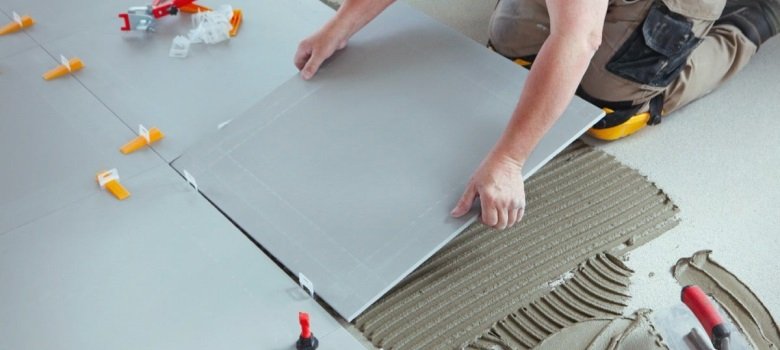When it comes to transforming a space, few things have the same impact as a carefully chosen tile. Tiles can enhance aesthetics, add durability, and improve functionality in a home. However, the wide variety of materials, sizes, and finishes available can make the selection process overwhelming. From ceramic to porcelain, large-format tiles to intricate mosaics, each choice brings its unique qualities to the table. In this guide, we’ll break down everything you need to know to make the right decision, tailored specifically for Irish homeowners. Whether you’re remodeling a kitchen, bathroom, or outdoor space, here are the key considerations for choosing the perfect tile.
1. Understanding Tile Materials
Two of the most popular materials for tiles are ceramic and porcelain. Both offer unique benefits, but they differ in composition, durability, and application.
- Ceramic Tiles: Made from natural clay and other minerals, ceramic tiles are often glazed, providing a smooth, colored finish. These tiles are affordable, easy to install, and versatile in design, which makes them an excellent choice for walls or low-traffic areas. However, they are not as dense or water-resistant as porcelain, so they might not be the best option for floors in high-traffic or outdoor areas.
- Porcelain Tiles: Porcelain is a more refined material, with finer clay and a higher firing temperature, which makes it denser and less porous than ceramic. Porcelain tiles are highly durable, moisture-resistant, and suitable for high-traffic areas or outdoor use. These tiles come in a variety of finishes, including polished, matte, and textured options, which can mimic the look of stone, wood, or marble.
When choosing between ceramic and porcelain, consider the location. In areas prone to moisture, such as bathrooms, or for flooring where durability is paramount, porcelain is often the better choice.
2. Choosing the Right Size and Format
One of the biggest trends in recent years is the shift toward large-format tiles, with sizes like 60×120 cm becoming increasingly popular. These oversized tiles can create a seamless look in both small and large spaces, reducing the number of grout lines and giving a cleaner, more modern aesthetic.
Benefits of Large-Format Tiles:
- Visual Continuity: Fewer grout lines create a streamlined, open look. This can make smaller rooms appear larger and more cohesive.
- Easy Maintenance: With fewer grout lines, there’s less opportunity for dirt and mold to accumulate, making large-format tiles easier to clean.
- Versatility: Large tiles work well on both walls and floors, making them an excellent choice for open-plan layouts.
However, larger tiles are also heavier and can be challenging to install, requiring specific adhesive and sometimes a leveling system to ensure a smooth, even finish. This is where enlisting a professional tiler can make all the difference, especially when working with larger tiles.
3. Rectified Tiles for a Sleek Finish
Another term you’ll come across is rectified tiles. These tiles are mechanically cut to ensure that every tile is perfectly square with sharp edges. This precision allows for minimal grout lines, often as thin as 1-2 mm, which enhances the clean, modern look that many Irish homeowners desire. Rectified tiles are ideal for contemporary spaces, and when installed correctly, they offer an almost seamless appearance.
Rectified tiles are usually found in porcelain but can also come in ceramic versions. The precise edges of these tiles also mean that they require a very stable and level surface, which again highlights the need for a professional tiler.
4. Adding Character with Mosaic and Feature Tiles
While large-format tiles create a bold, uninterrupted look, mosaic and feature tiles are perfect for adding a unique touch. Whether it’s a backsplash in the kitchen or a standout wall in the bathroom, mosaic tiles add color, texture, and intricate detail.
- Mosaic Tiles: Made up of small, individual tiles, mosaic patterns are a fantastic way to bring artistry into your space. These tiles are often used for feature walls, backsplashes, or shower areas, and are available in various materials, including glass, stone, and ceramic.
- Feature Tiles: Larger than mosaics but equally eye-catching, feature tiles are designed to draw attention. Whether patterned, textured, or vibrantly colored, they can be used to create a focal point in any room.
When incorporating mosaics or feature tiles, it’s essential to balance them with more neutral surroundings to avoid overwhelming the space. Additionally, mosaics and other intricate tiles often require more grout, which can be more labor-intensive to install and clean, so consider using them sparingly.
5. Choosing the Right Grout and Adhesive
No tile installation is complete without the right grout and adhesive. Grout not only holds tiles in place but also plays a role in the final appearance and longevity of the installation.
- Grout: The color of the grout can significantly affect the appearance of your tiles. A contrasting grout, for example, can emphasize the tile pattern, while a matching grout color offers a more unified look. When it comes to grout quality, using a high-quality, waterproof option is essential, especially in moisture-prone areas. Anti-mold grouts are also available, which are beneficial in bathrooms.
- Adhesive: Tile adhesive is crucial for ensuring that your tiles stay in place for years to come. The type of adhesive depends on the tile material, location, and size. Large-format tiles and porcelain require a stronger adhesive due to their weight and density, while lighter ceramic tiles may need less-intensive adhesives.
6. Importance of Proper Installation: The Role of a Professional Tiler
While DIY tile projects can be tempting, particularly for small areas, hiring a professional tiler is often worth the investment for larger or more intricate projects. This is particularly true when working with large-format or rectified tiles, which require a flat and even surface, precise spacing, and, in some cases, specialized tools like a leveling system.
A professional tiler will:
- Ensure Proper Alignment and Spacing: Large-format and rectified tiles need exact alignment to avoid uneven edges or lippage. A leveling system can be used to keep tiles perfectly flush.
- Use the Right Materials and Techniques: A professional will know the best adhesive and grout to use based on tile type, size, and application.
- Provide Long-Lasting Quality: Professional installation reduces the risk of future problems, such as tiles shifting or grout cracking, which can be costly to repair.
In Ireland, where damp and variable weather can impact indoor and outdoor tiles, investing in a professional tiler ensures that your installation withstands these conditions.
7. Tiles for Irish Homes: Considering Climate and Maintenance
Ireland’s climate requires special considerations, particularly for outdoor or high-moisture areas. Porcelain tiles, for instance, are frost-resistant and highly durable, making them ideal for patios, outdoor paths, or entrances exposed to the elements. Indoor areas, especially kitchens and bathrooms, may benefit from tiles with anti-slip finishes, which are available in both ceramic and porcelain options.
Another factor is maintenance. Choosing larger tiles, especially with rectified edges, means fewer grout lines and less upkeep. When selecting grout, opt for darker colors or stain-resistant options in high-traffic areas, as lighter colors may require frequent cleaning.
Conclusion
Selecting the right tiles for your home can transform your space, adding value, style, and functionality. By understanding the differences between ceramic and porcelain, exploring large-format tiles like 60×120 cm, incorporating mosaic and feature tiles for personality, and using quality grout and adhesive, you can ensure a beautiful and long-lasting result. For a smooth finish and peace of mind, hiring a professional tiler can make all the difference, especially when working with challenging materials and larger tiles. Whether you’re renovating a bathroom, upgrading a kitchen, or creating an inviting outdoor space, choosing the right tiles will set the foundation for a home that reflects your style and meets your needs.
Tiles are not just a functional element; they are an opportunity to showcase your style. So, take your time, explore your options, and don’t hesitate to seek professional help to make your Irish home truly shine.




